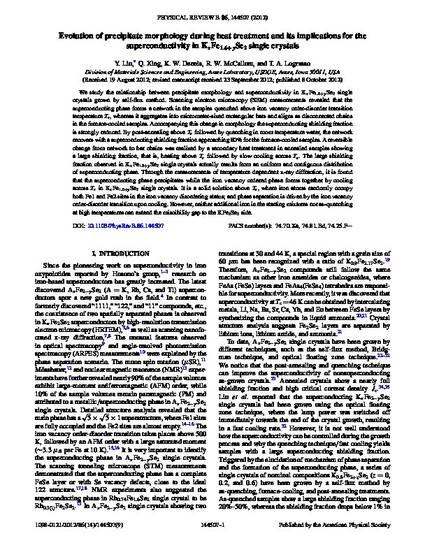
We study the relationship between precipitate morphology and superconductivity in KxFe1.6+ySe2 single crystals grown by self-flux method. Scanning electron microscopy (SEM) measurements revealed that the superconducting phase forms a network in the samples quenched above iron vacancy order-disorder transition temperature Ts, whereas it aggregates into micrometer-sized rectangular bars and aligns as disconnected chains in the furnace-cooled samples. Accompanying this change in morphology the superconducting shielding fraction is strongly reduced. By post-annealing above Ts followed by quenching in room temperature water, the network recovers with a superconducting shielding fraction approaching 80% for the furnace-cooled samples. A reversible change from network to bar chains was realized by a secondary heat treatment in annealed samples showing a large shielding fraction, that is, heating above Ts followed by slow cooling across Ts. The large shielding fraction observed in KxFe1.6+ySe2 single crystals actually results from an uniform and contiguous distribution of superconducting phase. Through the measurements of temperature dependent x-ray diffraction, it is found that the superconducting phase precipitates while the iron vacancy ordered phase forms together by cooling across Ts in KxFe1.6+ySe2 single crystals. It is a solid solution above Ts, where iron atoms randomly occupy both Fe1 and Fe2 sites in the iron vacancy disordering status; and phase separation is driven by the iron vacancy order-disorder transition upon cooling. However, neither additional iron in the starting mixtures nor as-quenching at high temperatures can extend the miscibility gap to the KFe2Se2 side.
Available at: http://works.bepress.com/thomas_lograsso/28/

This article is published as Liu, Yong, Qingfeng Xing, Kevin W. Dennis, R. William McCallum, and Thomas A. Lograsso. "Evolution of precipitate morphology during heat treatment and its implications for the superconductivity in K x Fe 1.6+ y Se 2 single crystals." Physical Review B 86, no. 14 (2012): 144507. DOI: 10.1103/PhysRevB.86.144507. Posted with permission.